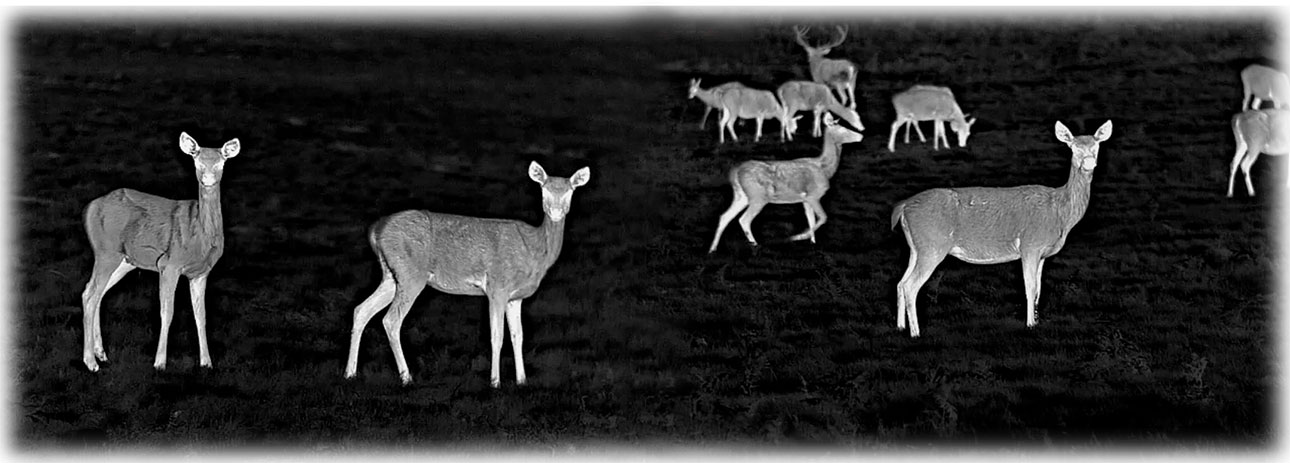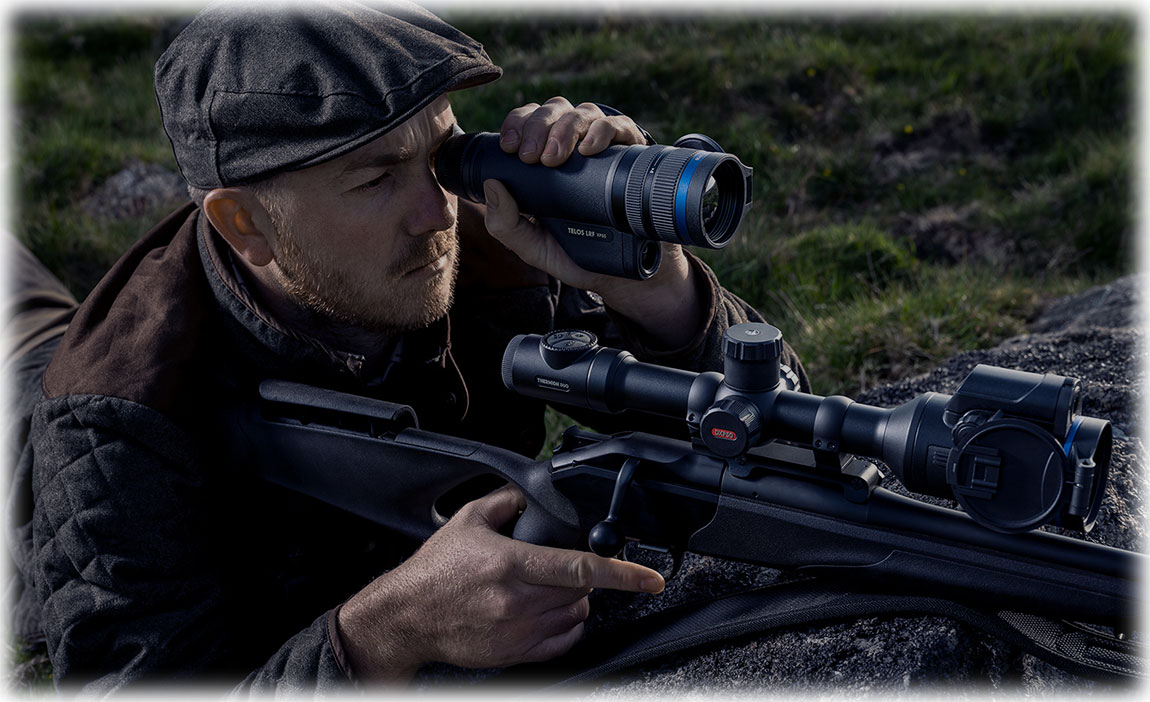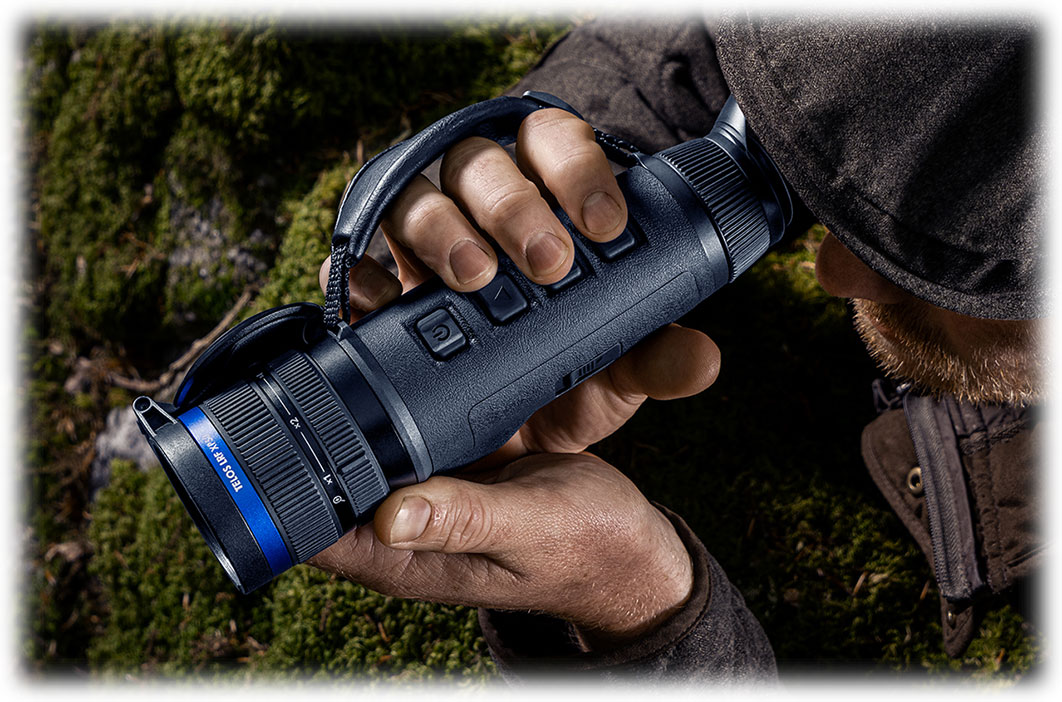
The aim of Digital Day/Night rifle sights
The aim of this guide is to describe the factors to be considered when choosing and using all sighting devices to shoot deer, and other legal quarry, in Scotland.
This guide will specifically cover:
- The legal limitations on what type of equipment can be used and under what circumstances;
- Considerations for the safe use of firearms;
- Considerations for animal welfare.
Legislative Context
The Deer (Firearms etc.) (Scotland) Amendment Order 2023 permits the use of a sight of any type including light-intensifying, heat-sensitive or other special sighting device for the culling of deer.
The Deer (Scotland) Act 1996 (as Amended) restricts the shooting of deer at night to those individuals with written authorisation from NatureScot.
Types of equipment
There are 4 main types of equipment, classified according to the way they work and the technology they use and include; day optics, image intensified, digital and thermal.
Day optics, image-intensified and digital devices require light to work while thermal devices use heat.
Day optical sights, binoculars and spotting scopes are designed for daytime use and offer little low-light and no night capability.
Image intensified devices work by amplifying any available light to provide a brighter image that is viewed on a phosphor screen. They are designed for night-time use and can be damaged if exposed to bright lights or used during the day. They are considered as passive devices as they work unaided but because of their sensitivity in the infrared spectrum the capabilities and performance can often be enhanced with the use of infrared illuminators.
Digital devices use digital sensors for imaging and can be used both day and night. Their infrared and low-light sensitivity will determine the night-time performance and in darker conditions they require the use of infrared illumination to operate effectively.
Thermal devices, detect heat and process an image based on the temperatures of the observed scene. They do not require light and can be used day and night.
There are also ‘add-on’ devices that can be mounted to conventional day telescopic sights. It should be noted that digital and image intensified devices can work front or rear mounted but thermal devices will only work front mounted or they can be standalone Night Vision, Thermal Imaging or Digital day / night sights.

A separate observation device or lamp must be used by the operator or accompanying individuals to scan the wider area to spot potential targets and non-targets, such as livestock. The use of these additional devices is also essential to assist with shot follow up.
It is recommended that image intensified rifle scopes should be at least Generation 2 or better. There are no specific requirements for digital riflescopes but the use of a compatible infrared illuminator is strongly recommended. For thermal riflescopes it is recommended that they have a sensor resolution of at least 384x288, a pixel pitch of 17µm or smaller, a lens focal length of 35mm or larger and a frame rate of 50Hz or more.
Range estimation in low-light and at night can be challenging so riflescopes with a built-in laser rangefinder, or the ability to use an additional such as a handheld digital or thermal spotter with a rangefinder capability, is advantageous.
Thermal Imaging devices do not work when viewing through glass e.g. car windows.
It is also worth noting that the performance of equipment is dependent on many factors including weather and atmospheric conditions, precipitation, light and/or temperature levels and the reflectance properties of habitats, so devices will not always perform consistently.
They may also be limited by humidity and damp misty conditions including damp air close to the ground, in woodland or high vegetation.
For all devices whether TI or NV consideration should be given to field of view, magnification, resolution and image quality and operators must satisfy themselves that the equipment is fit for purpose e.g. digital and image intensified devices always require a line-of-sight to be effective while thermal devices might allow observation through obscurants like vegetation but they will not see through glass. Understanding the benefits, constraints and risks of the equipment used is incumbent upon the operator.
When authorised operators are undertaking night shooting they must ensure they also have a suitable head torch / hand lamp to aid with follow up. A suitable dog must be present to track wounded deer and prevent unnecessary suffering (see Code of Practice).
Factors effecting device efficacy – the correct setup and operation of the device for the specific conditions is essential for safe and effective use. Therefore operators must ensure they are fully familiar with the equipment and its functions before use in the field.
In addition the following points must all be considered:
- Safe backstop assessment
- Range to target
- Ability to determine target animal, species, sex and age
- Ambient temperature and humidity
- Weather conditions and subsequent visibility – rain, snow, sleet, fog, damp air conditions
- Habitat type where culling is taking place
- Vegetation obstructing the target
- Other obstructions such as fencing or netting
- Device battery life – Lithium battery life and device performance can be inhibited by cold conditions.

Best Practice Operations
Safety
- Ensuring positive target identification and wider situational awareness using a thermal / night vision spotter prior to taking aim with the rifle mounted sight is essential. If in any doubt, do not shoot.
- Ensure the operator undertakes thorough familiarisation with the locale where culling is taking place and that an appropriate Risk Assessment has been carried out. *
- The rifle operator must be certain of a safe backstop and ensure the absence of any person or animal at risk of sustaining an injury should the bullet/shot miss, pass through the target animal, or ricochet. **
- Rifles with conventional telescopic sights and fitted with a clip-on device or, a standalone Night Vision, Thermal Imaging or Digital day / night sight, will need to be checked to ensure that they are accurately ‘zeroed’ and focussed for the ranges at which shooting is likely to take place. Operators should familiarise themselves with target species identification through the device prior to use.
- For safety reasons the sights on the rifle must not be used to scan the area or check the identity of a potential target – a firearm should never be pointed at anything until it has been positively identified as a legitimate target which is within range and with a safe backstop.
- Certain operations e.g. culling deer at night under a specific 18(2) night shooting authorisation require that this must be a 2 person operation when a vehicle is used. See Statutory Guide; Night Shooting Code of Practice. In dynamic situations a second person can assist with target identification and acquisition along with associated follow up where there may be a temporary loss of sight picture due to muzzle flip and blast.
Deer Welfare
- The rifle operator must satisfy themselves that they have correctly identified the chosen species, sex and age class of deer to be culled before any shot is taken.
- Deer must be fully visible and clear of obstructions such as tree branches or foliage before a shot is attempted. The recommended range is up to 100m.
- Shot placement is the responsibility of the marksman, operating within their known capabilities. The recommended shot is to the chest, as this is a larger vital area containing both the heart and lungs and a shot here will ensure a quick and humane kill. ***
- Where there is a risk of orphaning dependent young, ensure that Best Practice Guidance is followed at all times. ****
- Ensure marking of shot site and follow up in line with Best Practice Guidance *****
